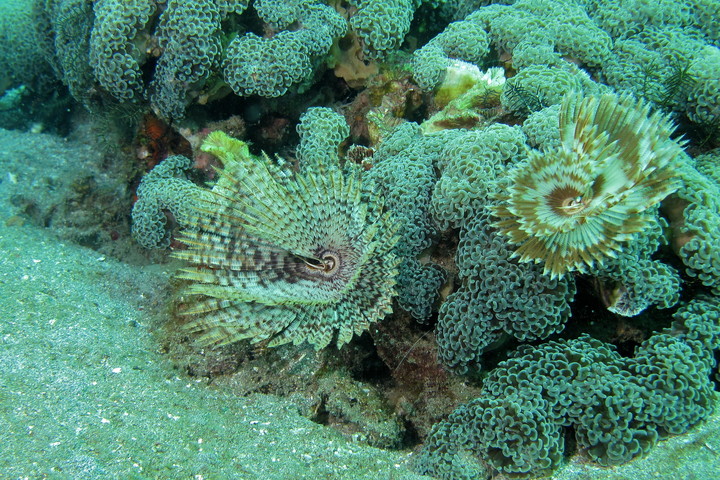Sabellastarte sanctijosephi

| Latin name | Sabellastarte sanctijosephi |
|---|---|
| Family | Sabellidae - Sabellastarte |
| Origin | East Indian Ocean, West Indian Ocean, Indonesia, East Pacific, Central/West Pacific |
| Max length | 10 cm (3.9") |
| Minimum volume |
50 l (13 gal) |
|---|---|
| Hardiness |
Average |
| Suitable for aquarium |
Suitable with care |
| Reef safe |
Always reef safe |
| Aggressiveness | Peaceful |
| Recommended |
Phytoplankton Zooplankton (Cyclops, pods...) |
|---|
Must be fed once a day in most aquariums to avoid starvation.
The tube housing the worm should be buried in the sediment.
It may be necessary to target feed this species, otherwise it might have difficulties to obtain enough food.
These tubeworms builds tubes out of a tough, parchment-like exudate. The genus Glomerula secretes a tube of calcium carbonate instead.
Feather-duster worms have a crown of feeding tentacles projecting from their tubes.
These worms feed on phytoplankton and zooplankton and are not photosynthetic animals. In most aquariums they require target feeding with a mix of plankton.
Numerous species of fish and shrimp tend to bother these worms in an attempt to eat the crown which may eventually kill the worm.
Some predators to keep in mind are triggerfishes, wrasses, angelfishes and butterflyfishes.
If the worm looses the crown it may grow back in a month or two if conditions are optimal.
Bob Goemans. Sabellastarte sanctijosephi - Saltcorner - (English)
Sabellidae - Wikipedia - (English)
Ronald L. Shimek. 2004. Marine Invertebrates (PocketExpert Guide) - TFH Publications / Microcosm Ltd. - (English)
2009. Sabellastarte indica - Tropical Fish Hobbyist Magazine - (English)

